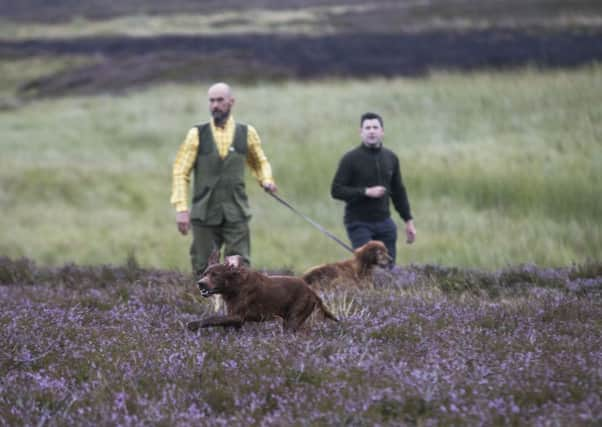Poor weather may delay start of grouse season


Perthshire and southern areas of the country are expecting good results but parts of the Highlands have suffered late snow and cold, wet weather in June.
This means that, instead of launching today, some shooting programmes at estates may have to be put on hold.
Advertisement
Hide AdAdvertisement
Hide AdBut even when scaled back, the economic contribution to the national and local economies is expected to be significant.
Tim Baynes, director of the Scottish Moorland Group, said: “The grouse industry is a lifeline for many young families and local businesses located in remote rural communities who rely on its employment opportunities both directly and indirectly.
“Continued moorland management is not only economically beneficial but is of huge benefit to many other moorland birds, some of which are endangered, including the curlew, which is on the red list for birds of conservation concern.”
Recent figures show more than £23 million flows directly to local businesses in trade generated by estate activity during the 121-day grouse shooting season, which starts on August 12 each year – “The Glorious 12th”.
The Scottish Country Sports Tourism Group’s Game for Growth strategy aims to increase the value of country sports to the economy by £30m, to £185m, by 2020.
Although prospects for the season this year are mixed, international interest in Scotland’s country sports has continued.
Andrew Grainger, of the Scottish Country Sports Tourism Group, said: “We are witnessing a continued level of enthusiasm this year from international tourists who are intent on sampling Scotland’s country pursuits.
“Scotland continues to attract a large number of European sports enthusiasts, with increased interest this year from Scandinavia, Germany and France in particular, as well as North Americans who are particularly keen given the favourable exchange rates.”
Advertisement
Hide AdAdvertisement
Hide AdBusinesses around Loch Ness and Inverness-shire benefited by £6.2m from the 11 grouse estates in the area which submitted accounts to the research for moorland estates group.
Meanwhile seven estates in Angus were worth about £4.2m to the local economy, while in Speyside six estates contributed £4m.
Ten estates across Grampian boosted the economy by about £3.1 m, with three in Perthshire providing £2m.